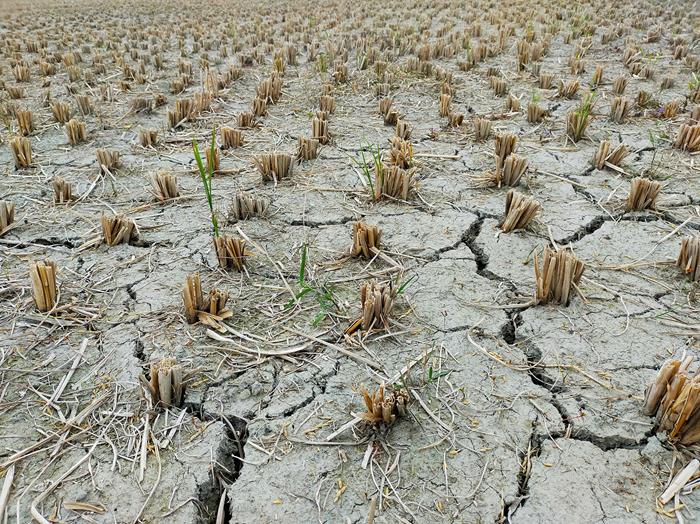Media outlets have been teeming with announcements of El Niño’s return – this, however, is not a major surprise for climate scientists, including those at the Earth Observatory of Singapore (EOS).

From left to right: Associate Professor Steve Yim, Professor Benjamin Horton, Assistant Professor Perrine Hamel (Source: Earth Observatory of Singapore)
El Niño is one of the phases of the El Niño-Southern Oscillation (ENSO), a temperature variation between the ocean and atmosphere over central and eastern tropical Pacific. The other phase of ENSO is La Niña. Where El Niño is associated with an increase in temperatures and decrease in precipitation in the region, La Niña brings about cooler and wetter conditions.
The warning signs
Professor Benjamin Horton, Director of EOS, foreshadowed El Niño’s return in February.
El Niño and La Niña take place at irregular frequencies every few years and each phase lasts between nine to 12 months, although they can sometimes span years. El Niño typically occurs more than La Niña, with the last major El Niño event ending in 2016.
Southeast Asia experienced La Niña events in the last three years. Despite this, ocean surface temperatures hit a record high in April and continue to remain at near-record levels. Collectively, these are signs pointing to the return of El Niño.
Impacts on the region and Singapore
Global temperatures and precipitation levels are influenced even though the impacts of El Niño are strongest around the Pacific Ocean. During the last major El Niño event, the Philippines experienced drought in over 60% of the country and in Singapore, between 15 to 20 per cent of corals were bleached as a result of the climatic changes. Forest fires exacerbated in Indonesia, resulting in one of the worst episodes of transboundary air pollution on record with the haze affecting the region for weeks.

Dry paddy field (Source: Md. Hasanuzzaman Himel/Unsplash)
The next El Niño event is likely to push global average temperatures beyond the 1.5 degrees Celsius threshold, further raising the risks of drought, floods, and heatwaves. “It will also increase the risk of food and water insecurity and poverty for millions of people worldwide. The 1.5 degrees Celsius of warming will see extreme heatwaves, sea level rising, and the destruction of 70 per cent to 90 per cent of coral reefs. This is why the figure is so important, and why allowing the planet to heat beyond that could be disastrous for nature and humanity,” said Prof Horton.
Associate Professor Steve Yim, Principal Investigator at EOS, expects air quality to be negatively affected in the coming months. In addition to El Niño, the region can expect to experience the positive phase of Indian Ocean Dipole, a phenomenon similar to El Niño which occurs in the Indian Ocean. “Both phenomena together will give us very warm and dry conditions in our region. We typically have less rainfall. That will be very favourable for transboundary pollution, especially if we cannot control the emissions properly,” said Assoc Prof Yim. The drier climate also contributes to the accumulation of pollutants in the air.

Smoke from factories across Labrador Park, Singapore (Source: Suganth/Unsplash)
The last time the effects of El Niño and the positive phase of Indian Ocean Dipole combined in 2015, Singapore’s 1-hour PM2.5 concentration reached a peak of 471 micrograms per cubic metre. PM2.5 is the predominant pollutant in transboundary haze, and the 1-hour PM2.5 readings provide the most accurate real-time air quality indicator. Assoc Prof Yim shared that current climate models have projected similar readings.
Preparedness – For now and the future
To combat transboundary haze, Assoc Prof Yim recommends strengthening emission control policies within the region.
Assistant Professor Perrine Hamel, Principal Investigator at EOS, and team member Aikeen Lim, PhD student at the Asian School of the Environment, recently shared sustainable solutions to mitigate the effects of El Niño. “We can make a concerted effect in reducing the amount of heat produced and stored within the city, thereby making us less vulnerable to potential heatwave events,” said Asst. Prof Hamel. The team suggests a combination of green infrastructure, nature-based solutions and lifestyle adjustments.

Airconditioning units for an apartment building in Kuala Lumpur, Malaysia (Photo by Kevin Jiner/Unsplash)
On a micro level, as individuals, we can choose public transport like the train or bus over personal vehicles. We can also consider using a fan instead of air-conditioners or using air-conditioners for shorter periods. Minor changes like these, which can be easily and swiftly implemented, contribute to a reduction in the amount of human-made heat.
On a macro level, to better prepare for undesirable climatic conditions in the long run, fewer trees should be cut down while more are strategically planted, and smart urban design should be integrated in newer buildings.
Perhaps, with the onset of the next major El Niño event, policy makers will be propelled to act more swiftly. As Prof Horton said, “The 2023 El Niño may lead to governments pursuing a resilient, sustainable world earlier than previously thought.”